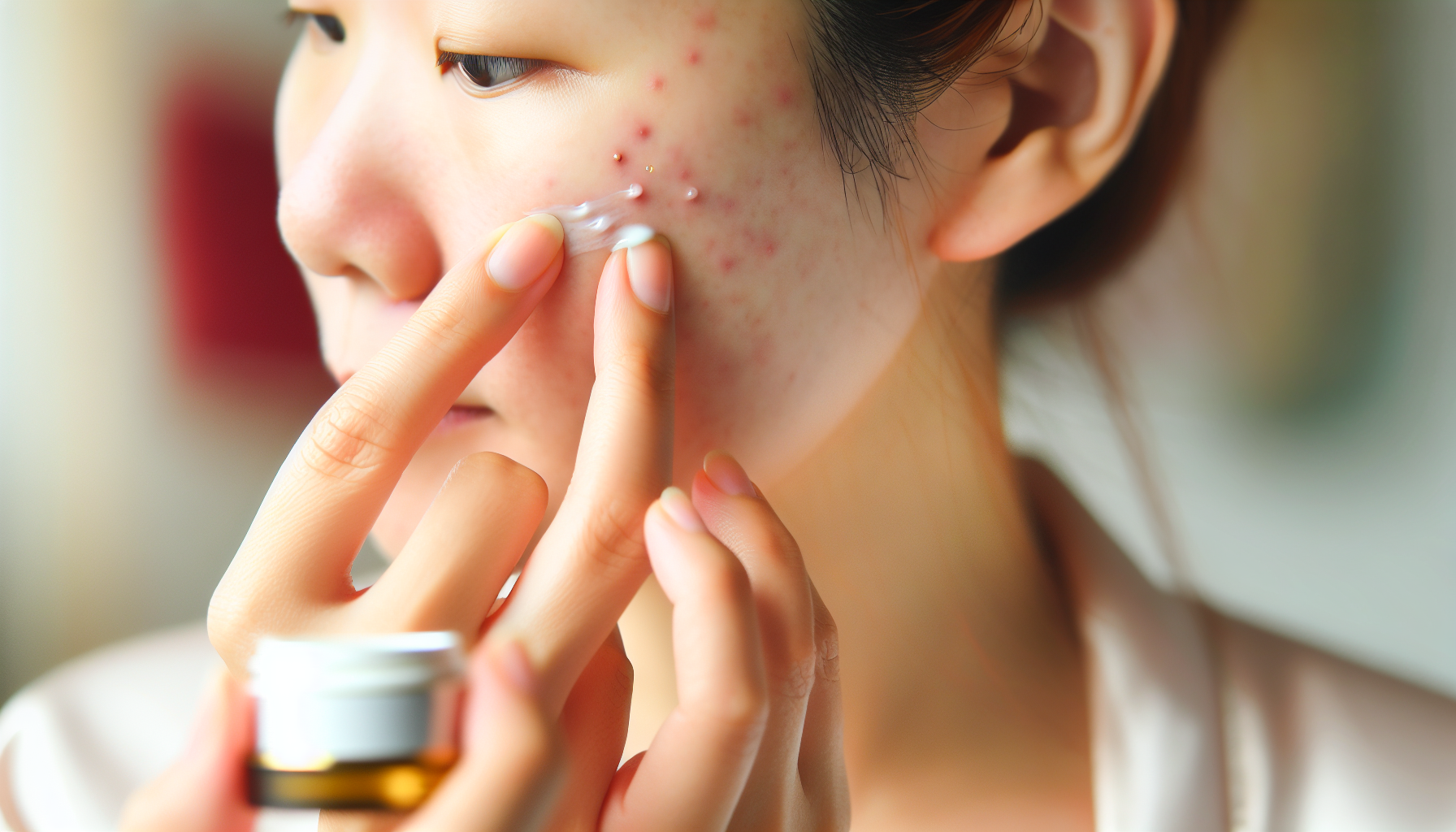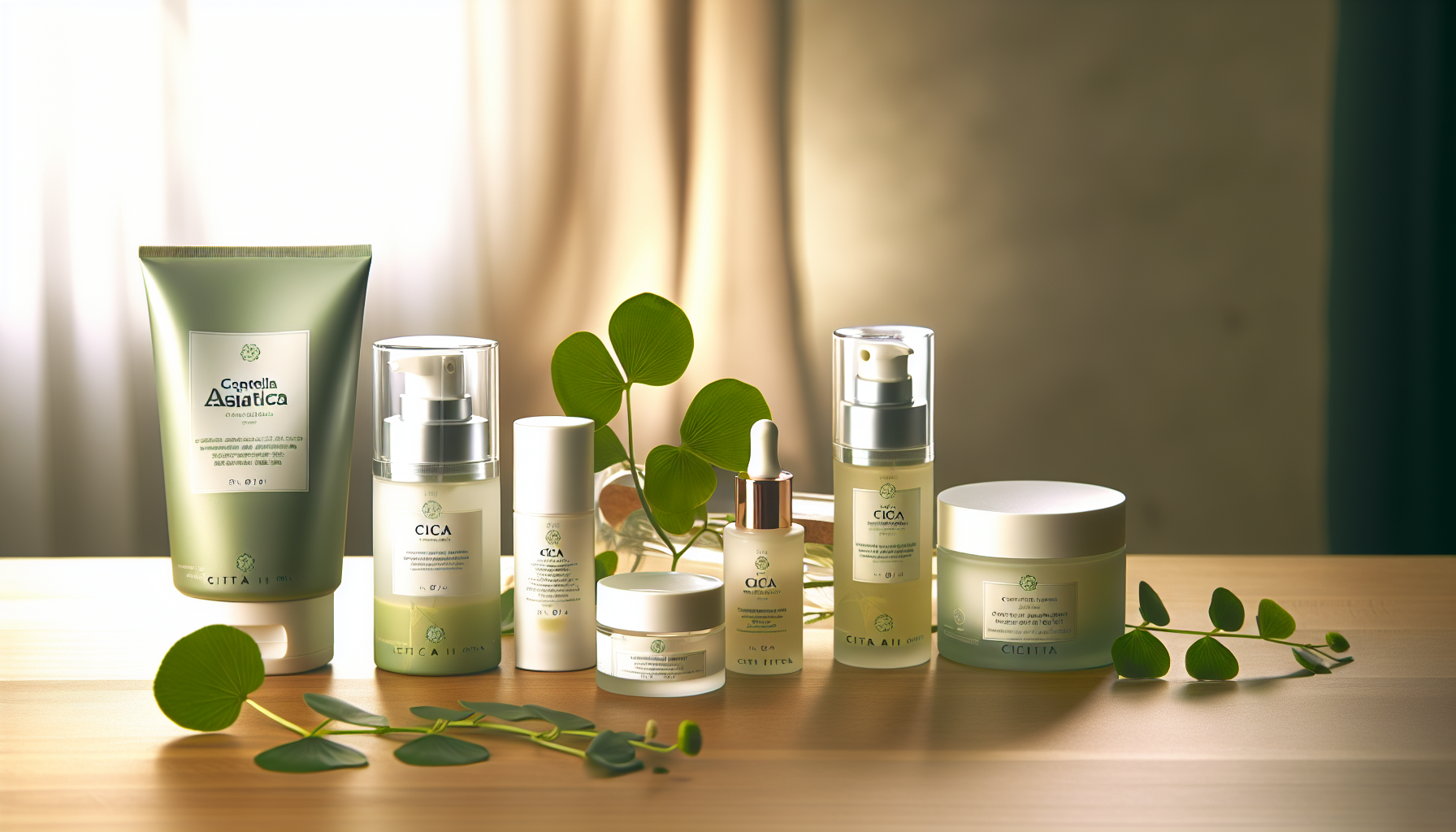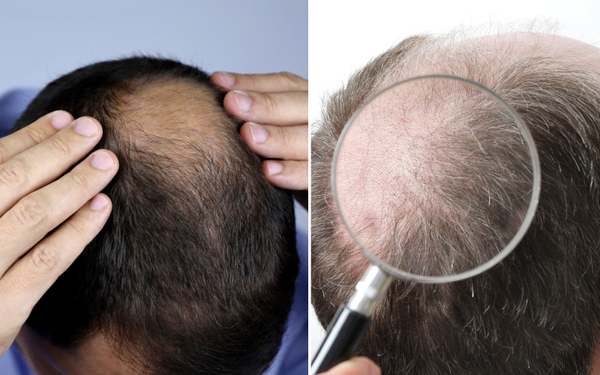Many skincare enthusiasts wonder: can cica remove dark spots? Also known as Centella Asiatica, cica is celebrated for its healing properties, but its impact on hyperpigmentation is a subject of increasing interest. This article delves into whether cica can be a potent ally against dark spots, addressing its qualities and how it might benefit your skin complexion.
Key Takeaways
- Cica, derived from Centella Asiatica, is known for its skin-soothing properties, hydration boost, antioxidant support, and anti-inflammatory benefits that aid in skin healing and elasticity.
- Centella Asiatica may play a beneficial role in reducing dark spots due to its antioxidant and anti-inflammatory properties, although conclusive scientific evidence of its hyperpigmentation treatment efficacy is still required.
- In skincare routines, Cica can be paired with other ingredients such as hyaluronic acid, vitamin C, and niacinamide for enhanced skin benefits, and it is considered safe with a low-risk profile for most users.
Understanding Cica: Centella Asiatica's Skin Benefits

Cica, or Centella Asiatica, is a plant extract renowned for its skin-soothing properties. It’s packed with bioactive compounds that boost hydration, offer antioxidant support, and provide anti-inflammatory benefits. When applied topically, Centella Asiatica enhances skin moisture levels by increasing skin surface hydration and reducing water loss. This makes it a go-to ingredient in treating dry and sensitive skin conditions.
Thanks to its therapeutic properties, Centella Asiatica offers a range of benefits in skincare applications:
- Acts as a robust protective barrier against environmental stressors due to its extensive antioxidant support
- Exerts anti-inflammatory effects, reducing redness and irritation
- Helps to improve skin elasticity and firmness
- Promotes collagen production, aiding in the healing of wounds and scars
These properties make Centella Asiatica a valuable ingredient in skincare products.
Active Compounds in Cica
The secret behind Cica’s numerous skin benefits lies in its active compounds. Centella Asiatica is packed with four main bioactive compounds:
- Asiaticoside
- Asiatic acid
- Madecassoside
- Madecassic acid
These compounds are recognized for their significant dermatological and pharmacological activities.
A group of triterpenic acids - asiatic, madecassic, and others - promote skin regeneration and display strong anti-inflammatory effects. Beyond these key compounds, Centella Asiatica also harbors a diverse array of active components, including:
- triterpenoid saponins
- flavonoids
- phenolic acids
- amino acids
All of these, including the root extract, contribute to its calming and hydrating properties, providing the ability to soothe skin effectively.
Korean Skincare and Cica
Cica has quickly become a star ingredient in Korean skincare products and routines. The reason behind this popularity is Cica’s ability to not only improve skin texture but also to calm skin irritation, addressing a wide array of skin concerns.
Korean skincare products frequently include Cica due to its ability to:
- strengthen the skin barrier function, which is vital for preserving skin health and preventing moisture loss
- soothe and hydrate the skin
- improve the skin’s integrity
It’s clear why Cica is a cornerstone of Korean skincare.
The Dark Spot Dilemma: Causes and Solutions

Dark spots, also known as age spots or solar lentigines, are small, flat, dark areas on the skin. They result from overactive pigment cells and are primarily caused by prolonged exposure to ultraviolet (UV) light, which heightens melanin production. This can lead to either a clump or a substantial concentration of melanin in one area, creating visible spots on the skin.
While these spots are more frequently seen in adults over 50, they can also affect younger people who have been exposed to substantial amounts of sun. Light-skinned individuals and those with a history of intense sun exposure or sunburns are at higher risk for developing these spots.
The first line of defense against the dark spot dilemma is prevention. Measures such as limiting sun exposure, especially from 10 a.m. to 2 p.m., applying broad-spectrum sunscreen with SPF 30 or higher, and donning UV-protective clothing can help mitigate the risk of age spots.
Cica's Role in Addressing Dark Spots
Cica’s potential role in addressing dark spots lies in its antioxidant, anti-inflammatory, and skin healing properties, which also contribute to its anti aging benefits. Centella Asiatica contains flavonoids such as quercetin, kaempferol, and catechin, which have antioxidant properties that can help protect the skin from oxidative stress, a factor in the development of dark spots.
The anti-inflammatory properties of Centella Asiatica may also assist in minimizing skin redness and irritation that often accompany dark spots, promoting a more even skin tone. Cica also aids in skin healing and reduces the appearance of scars, including fading acne scars and those that cause dark spots, by stimulating fibroblast proliferation and collagen production.
While Centella Asiatica’s properties are promising for reducing dark spots, it’s noteworthy that the current evidence doesn’t provide a conclusive verdict. More scientific research is necessary to establish its efficacy as a treatment for hyperpigmentation.
Cica and Acne Marks: A Soothing Combination

Acne-prone skin can benefit immensely from Cica’s potent anti-inflammatory properties. Cica can help ease the redness and skin inflammation associated with acne, making it a reliable ally in acne management. Madecassoside, a compound derived from Centella Asiatica, can soothe breakouts linked to bacterial inflammation and complement other acne-fighting actives.
Centella Asiatica, by fortifying the skin’s protective barrier, assists in the skin recovery process – a vital aspect for individuals with acne-prone skin. Furthermore, the antioxidant properties of Centella Asiatica help protect the skin from environmental stressors that may aggravate the visibility of acne scars.
Current studies suggest that asiaticoside, one of Cica’s bioactive compounds, may disrupt the formation of dark spots, indicating potential for reducing the appearance of acne marks.
Incorporating Cica into Your Skincare Routine

Thanks to its hydrating and soothing properties, Cica seamlessly blends into both morning and evening skincare routines and pairs well with other skincare ingredients. For those with oily skin, Cica can be used in lightweight, non-comedogenic formulations, like serums, to improve hydration without increasing oiliness.
When incorporating Cica products into your routine, be mindful of layering. Here are some guidelines to follow:
- Serums should be applied after cleansing and before moisturizing.
- Creams should be applied after lighter products and can also be used as a thicker moisturizer.
- It’s recommended to perform a patch test with Cica creams to ensure no allergic reactions occur.
- Start with a few applications per week, gradually increasing to daily use.
Sunscreen application following the use of Cica products is vital for those with oily skin, especially if the routine involves sensitizing ingredients like retinol, to safeguard the skin from sun damage. Cica can also be worn under makeup to provide moisture and to prevent the base from caking or creasing, thanks to its hydrating properties.
Cica Pairings: Complementary Ingredients for Maximum Effectiveness
Cica is not a solo player. It can be combined with other potent ingredients such as hyaluronic acid, vitamin C, and niacinamide to enhance skin benefits and address various skin concerns.
Vitamin C and Centella Asiatica complement each other and can be used together in the same routine or product to enhance the skin’s brightness and reduce the appearance of dark spots. Niacinamide can be used with Centella Asiatica within the same routine or product, offering additional benefits such as reduced inflammation, improved skin texture, and a stronger skin barrier.
Safety and Side Effects of Cica
Even though the benefits of Cica are noteworthy, ensuring safety should always take precedence when experimenting with new skincare ingredients. Fortunately, Centella Asiatica has a low-risk profile and is considered safe for use by people of all ages, skin types, and ethnicities.
Safety assessments have revealed no significant adverse effects, demonstrating Centella Asiatica’s high safety margin for human consumption. However, like any skincare ingredient, it’s not entirely without potential side effects. When applied to the skin, it may result in itchiness and redness. When taken orally, it may cause nausea and stomach pain.
Summary
In a world brimming with skincare ingredients, Centella Asiatica stands out for its impressive range of benefits. From its hydrating and soothing properties to its potential in addressing skin concerns like dark spots and acne marks, Cica is a versatile ingredient that deserves a place in your skincare routine.
However, as with any skincare ingredient, it’s important to remember that everyone’s skin is unique. While Cica offers promising benefits, its effectiveness can vary from person to person. Always remember to perform a patch test before fully incorporating any new ingredient into your routine and to consult a dermatologist if you have any concerns.
Frequently Asked Questions
Is Cica good for dark spots?
Yes, Cica is good for dark spots as it effectively fades acne scars and dark spots while soothing inflammation. It also helps in controlling further breakouts.
Does Cica lighten skin?
Yes, Cica can lighten the skin by enhancing the skin's appearance and brightening the complexion. It is commonly found in moisturizers and CC cream products.
Does Cica remove scars?
No, CICA-CARE is designed to soften, flatten, and fade red, dark, or raised scars resulting from surgery, accidents, cuts, burns, and injuries, but it is not suitable for use on white scars that fade naturally over time.
Which is better Cica or niacinamide?
Niacinamide is better for balancing oil production and reducing inflammation, while Cica is great for calming and soothing the skin, particularly with probiotic actives to restore skin balance. Choose based on your specific skin needs.
What is Cica?
Cica, also known as Centella Asiatica, is a plant extract that offers skin-soothing properties by providing hydration, antioxidant support, and anti-inflammatory benefits.
You Might Also Like...











